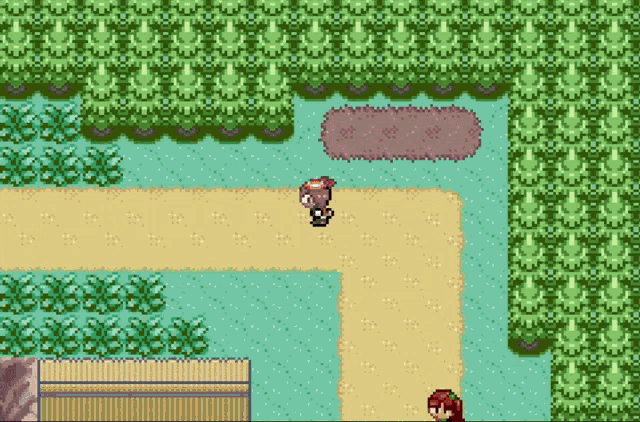Pokémon Ruby Version Review: A Delightfully Fun Adventure
Game Title: Pokémon
Ruby
Publisher:
Nintendo; The Pokémon Company
Year: November 21, 2002
ESRB
Rating: E for Everyone
Platform: Game Boy Advance
Genre:
Adventure game, Japanese RPG
· Fun Factor: Pokémon Ruby excels in delivering an engaging gameplay experience that keeps players hooked from start to finish. The core mechanic of capturing, training, and battling Pokémon remains as addictive as ever. The thrill of encountering and catching new Pokémon, strategizing battles, and evolving your team provides a sense of accomplishment and progression. The game strikes a perfect balance between simplicity for newcomers and depth for experienced players, ensuring an enjoyable experience for all.
· Learning
Curve: The learning curve of Pokémon Ruby, like other Pokémon games, can
vary depending on your previous experience with the series and your familiarity
with role-playing games (RPGs) in general. However, Pokémon games are generally
designed to be accessible to players of all ages and skill levels, so even if
you're new to the franchise or RPGs, you should be able to pick it up and enjoy
it.
At the beginning of Pokémon Ruby, you'll be
introduced to the basic mechanics of the game, such as catching Pokémon,
battling trainers, and navigating the world. The game gradually introduces new
concepts and features as you progress, allowing you to learn and adapt to them
over time. Some of the core gameplay elements you'll encounter include catching
Pokémon, Pokémon battles, Pokémon types, gym battles, and team building.
· Graphics: Pokémon Ruby and Sapphire were released for the Game Boy Advance in 2002 and marked the third generation of Pokémon games. In terms of graphics, they were a significant leap forward compared to their predecessors Pokémon Gold and Silver. Despite being released on the Game Boy Advance, Pokémon Ruby and Sapphire boasts impressive graphics that pushed the handheld console's limits. The vibrant color palette and detailed sprite work brought the Hoenn region to life. Each Pokémon is beautifully animated, showcasing their unique traits and abilities. The game's environments, from bustling cities to serene forests and treacherous caves, offer a diverse and visually pleasing experience.
· Audio: The soundtrack of Pokémon Ruby Version is
nothing short of exceptional. Composed by Junichi Masuda, the music complements
the game's atmosphere perfectly, whether it's the upbeat tunes of lively towns
or the epic melodies during intense battles. The sound effects, such as the
iconic cries of Pokémon or the rustling of tall grass, add depth to the overall
audio experience.
· Controls: In terms of controls, Pokémon Ruby follows the traditional turn-based battle system that the series is known for. The controls in Pokémon Ruby are relatively straightforward and easy to learn -- intuitive and responsive, making it easy to navigate through the game world, engage in battles, and manage your Pokémon team. The simplicity of the controls allows players of all ages to pick up the game and enjoy it without much difficulty.
As
for a rating, I would give the controls of Pokémon Ruby a solid 8 out of 10.
While they are simple and effective, they don't offer any groundbreaking or
innovative features compared to other Pokémon games. However, they provide a
smooth and enjoyable experience, allowing players to fully immerse themselves
in the game.
D-Pad: Move character
A
button: Confirm, talk to people, interact with objects, select menu options,
advance dialogue.
B
button: Cancel, go back in menus, run (while held down)
Start:
Open menu
Select:
Open Pokédex
During battles
A
button: Confirm menu options, select moves, confirm item use, progress dialogue
B
button: Cancel menu options, go back in menus
D-Pad:
Select moves, switch between options in menus
Start:
Open menu (in battle, only allows player to flee or switch Pokémon)
Select:
Not used during battles
· Story & Characters: Pokémon Ruby weaves an engaging storyline that revolves around the battle between two villainous organizations, Team Magma and Team Aqua. As a young Pokémon Trainer, players find themselves caught in conflict as they strive to become the region's champion. The narrative introduces memorable characters, including Gym Leaders, rival trainers, and the enigmatic members of the villainous teams. In addition, Pokémon Ruby (and Sapphire) added 135 new Pokémon characters to the game's roster of legendary Pokémon, including Groudon and Kyogre.
While
the story may not be the most complex or groundbreaking, it serves its purpose
by driving the player forward and maintaining a sense of progression. The rival
character adds an extra layer of challenge and motivation, creating a
satisfying rivalry throughout the adventure.



















































































· Level
Design: Overall, the levels in Pokémon Ruby were well-crafted and provided a
balanced gameplay experience. Pokémon Ruby included eight gym leaders, each
with their own themed gym and unique puzzle or obstacle course. These gym
designs provided a sense of progression and required players to utilize
specific strategies to overcome the gym leader's Pokémon.
· Changes: If
there’s anything I could change about Pokémon Ruby, it would be to add new
side quests and mini games. Including additional side quests and mini games
throughout the game would provide players with more opportunities for
exploration and enjoyment. These could be optional activities that offer unique
rewards and incentives.
· Recommendation:
I would recommend this game to
anybody due to its learning curve. It is straightforward and easy, but so fun and
addictive! It’s the best game to get lost in – and it gives an edge that truly
makes it an immersive, unique, and engaging gameplay experience.









Comments
Post a Comment